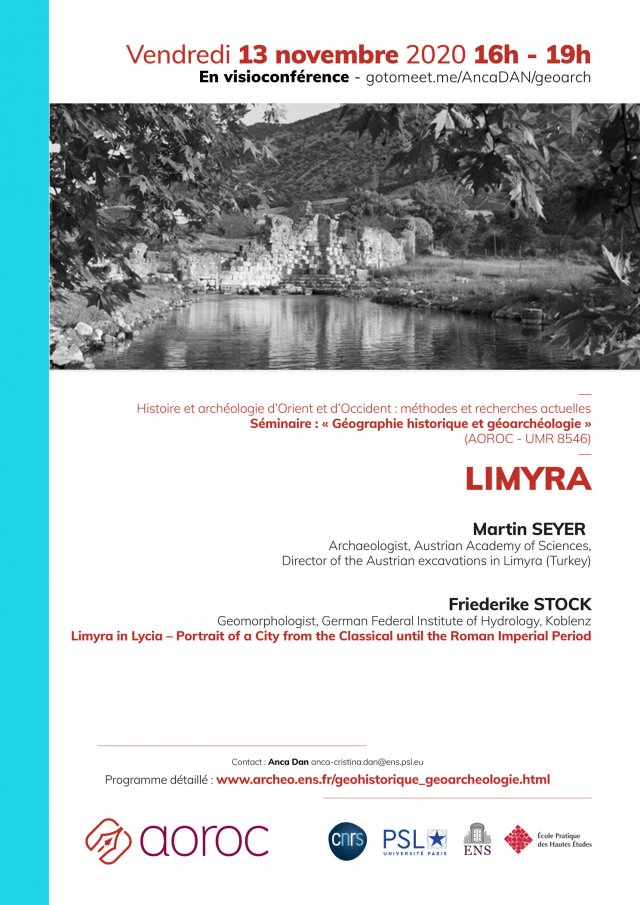
Archéologie & géoarchéologie
Martin Seyer &
Friederike Stock
Martin Seyer &
Friederike Stock
Vendredi 13 novembre 2020, 16h-19h
Visioconférence: https://www.gotomeet.me/AncaDAN/geoarch
Par téléphone: +33 187 210 241
Code d’accès: 906-762-757
Conférence dans le cadre du séminaire “Géographie historique et géoarchéologie”
- Martin Seyer
Archaeologist, Austrian Academy of Sciences,
Director of the Austrian excavations in Limyra (Turkey)
- Friederike Stock
Geomorphologist, German Federal Institute of Hydrology, Koblenz
Limyra in Lycia – Portrait of a City from the Classical until the Roman Imperial Period
The city of Limyra, located in Eastern Lycia/Asia Minor had her first heyday in the early 4th century BC, when the local potentate Perikle conquered the whole peninsula of Lycia and made Limyra her capital. Under his reign a comprehensive building program with a huge city wall and a citadel on top of the acropolis, an enlargement of the residential quarter and various necropoleis was realized. At this time also the monumental heroon of the dynasty which took the form of an amphiprostylos with larger-than-live-size caryatids instead of columns was erected. Under the Ptolemaic reign in the 3rd century BC Limyra was enlarged; the most impressive building of this era is the so called Ptolemaion, a temple for the ruler cult of the dynasty. The city remained important in the Roman period, when she was a prominent member of the Lycian league, a koinon of the cities of this cultural landscape.
After a presentation of the most important buildings of the Classical, the Hellenistic and the Roman periods, the focus of the lecture will be laid on the urbanistic development of this magnificent city with an emphasis on the Classical, the Hellenistic and the Early Imperial periods.
Responsable : Anca Dan







